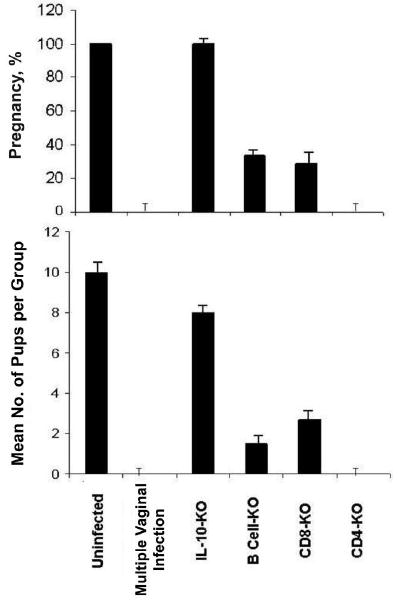Figure 6.

Involvement of T cells and subsets in the pathogenesis of Chlamydia-induced infertility. Groups of genetically engineered, specific gene knockout (KO) female C57BL/6 mice were infected twice intravaginally with mouse pneumonitis (1 × 105 inclusion-forming units per mouse) at 6-week intervals. The multiply infected group was infected 4 times. Four weeks after the last infection, the mice were mated with proven-fertile males and then weighed daily for 19–21 days to determine pregnancy, as described in the Materials and Methods. Results are expressed as the percentage pregnant (no. of pregnant mice/total no. of mice) (top) and the average number of pups per group (total no. of pups/total no. of mice) (bottom). The difference between groups was statistically significant (P < .006). Experiments were repeated twice with 6 mice per experimental group. IL-10, interleukin-10.
